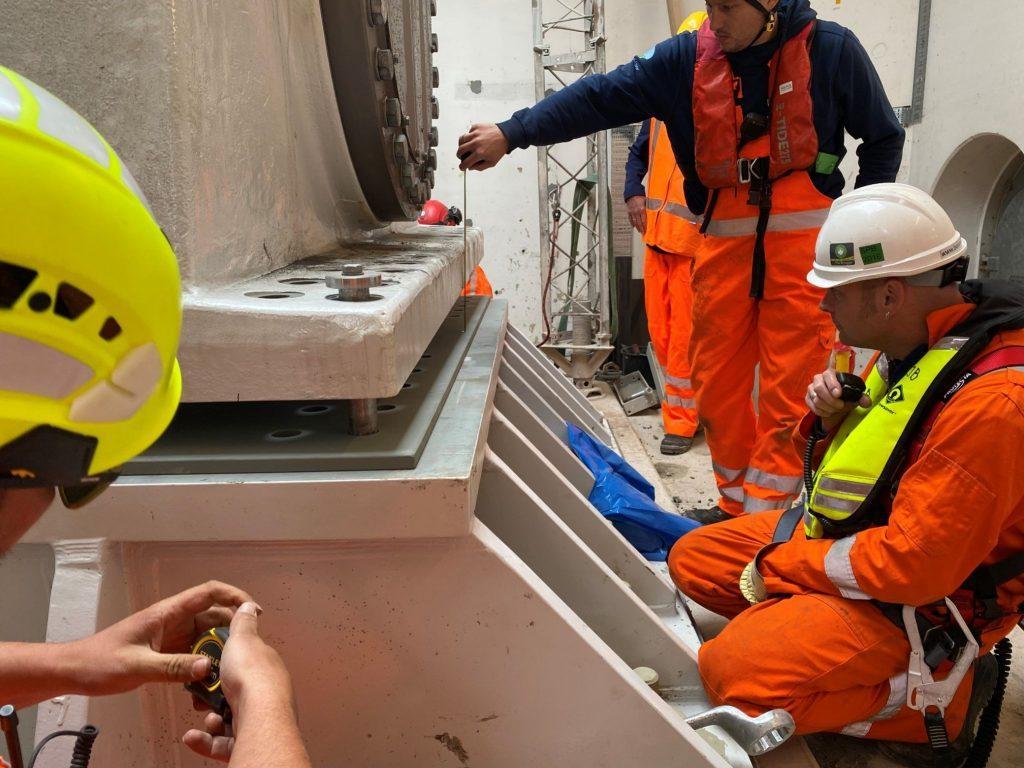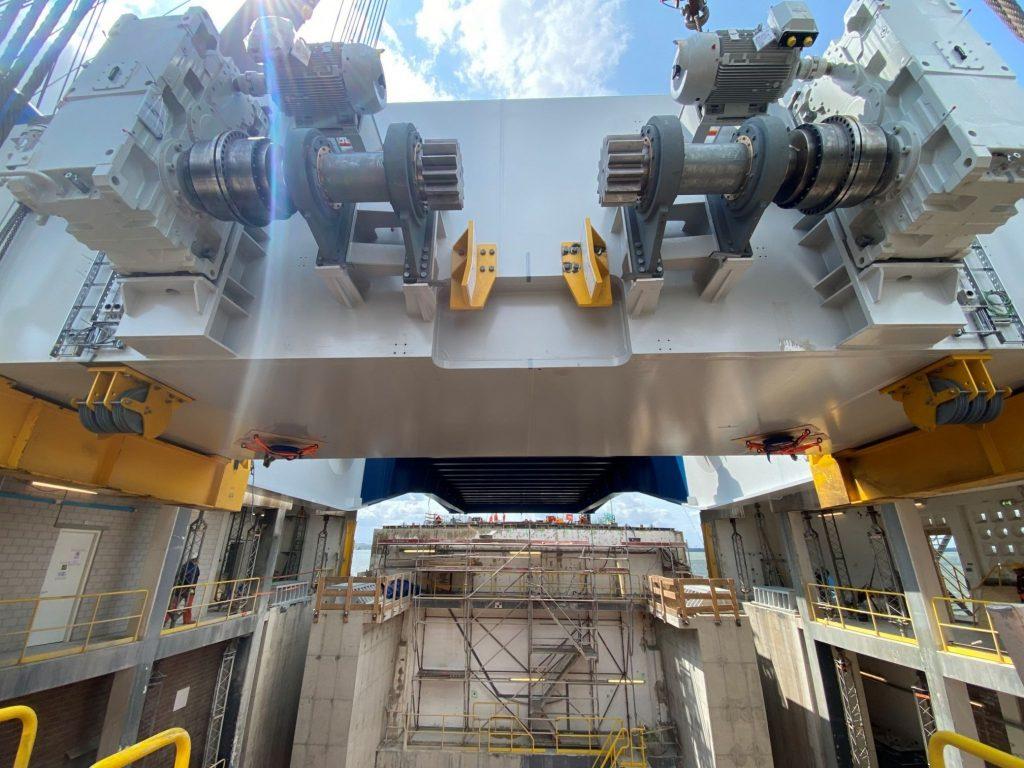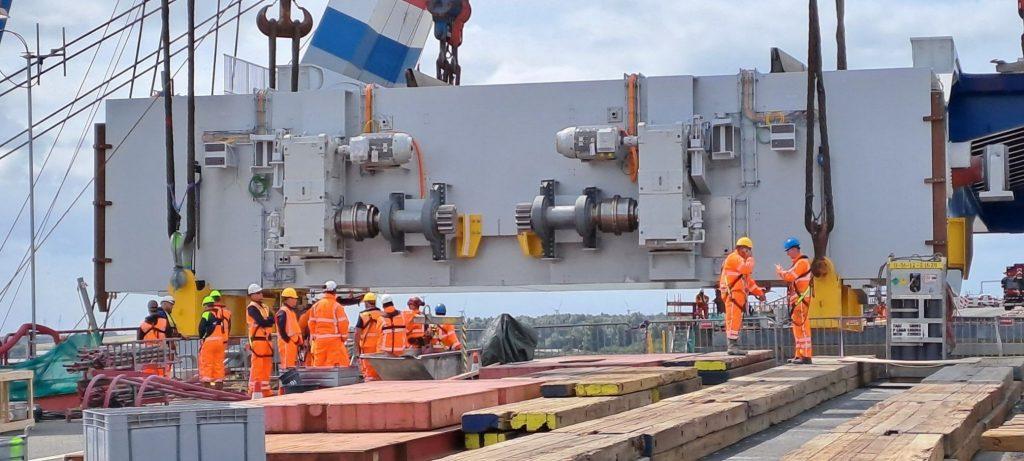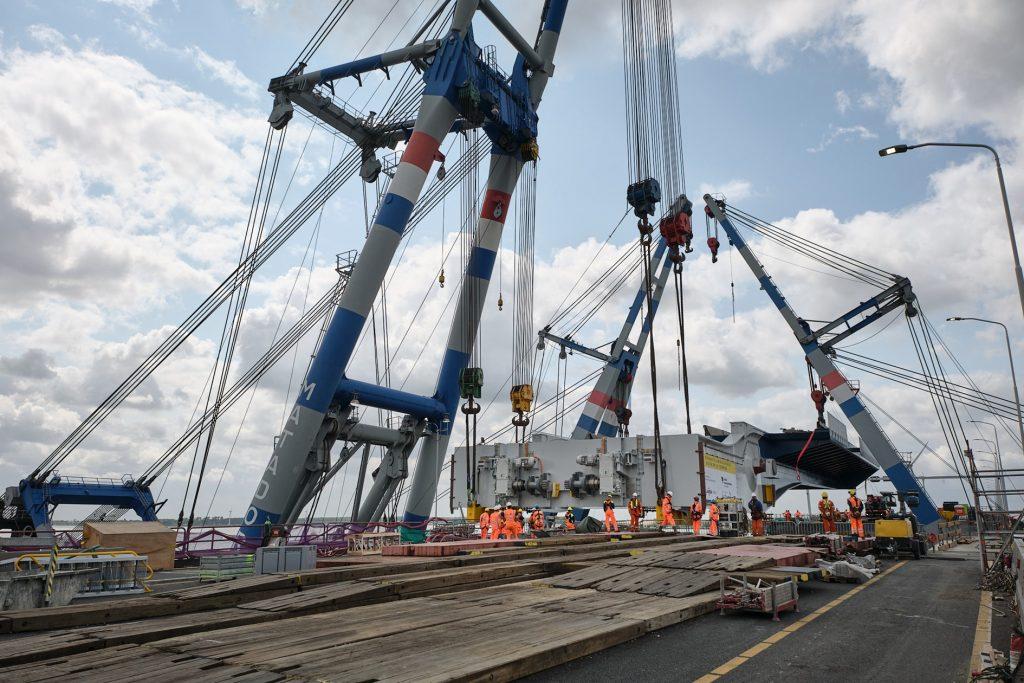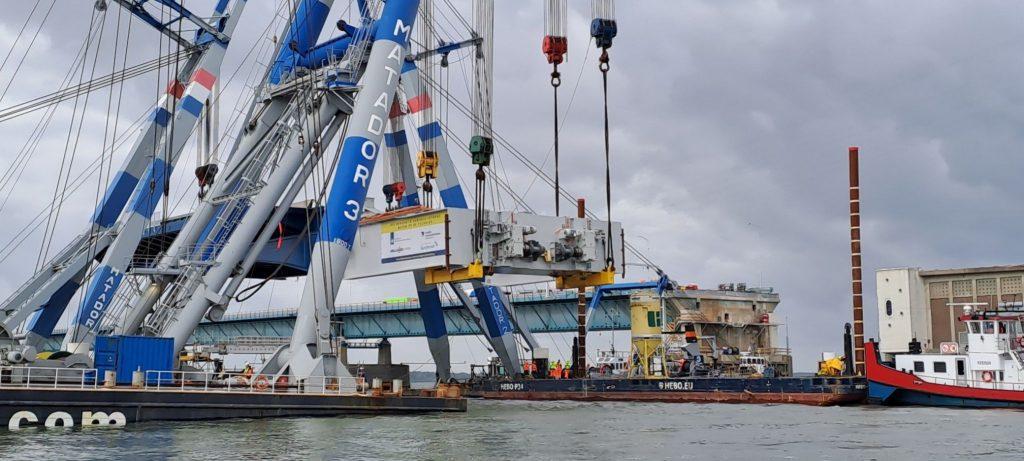After the flawless load out and smooth transport to the Haringvliet Bridge, a crucial moment in the entire project followed on Monday, July 3rd: the lifting of the new bridge valve. Because of the stormy weather, it remained uncertain until the last moment whether the lifting operation could be continued and the decision was postponed several times. Monday morning the wind was still quite strong but fortunately it came from a favorable direction. A final GO followed at 10 a.m. after which the fall was picked up and from then on there was no turning back. A number of very exciting hours followed in which all steps were calmly and controlled.
Lowering a 2.050-ton 57×26-meter bridge while swaying in the wind, with only 1.5 cm of clearance all around in the basement, was an immense challenge. Wooden wedge-shaped guide beams were strategically placed to force the bridge roughly into place. Tapered pins were used to position the bridge’s pivot points down to the last millimeter.
The largest lifting gantry, Matador 3, carried the full weight of the bridge’s counterweight box, 1.300 tons in total and therefore had a draft of 6 meters. Especially for this, the lifting area had to be dredged beforehand.
Project manager Patrick Bos explains, “The lifting took place with three floating gantries that were deployed almost at their maximum capacity. And although the colleagues of Bonn & Mees Drijvende Bokken BV and HEBO are ‘lords and masters’ in the field of lifting operations, this was a very special lifting under heavy conditions for them as well.”
Almost ‘Plug & Play’
In Hollandia Infra’s production hall, the bridge valve was already fully pre-assembled. Including the movement work by Machinefabriek Rusthoven and the cabling by Croonwolter&dros. This ensures that installation time on the construction site can be reduced to a minimum.
What next?
The next phase in the project is the adjustment of the cogwheel with which the bridge will soon be opened. The teeth on this 20 meters long, 100 ton curved railway track must be aligned with the gears of the moving bridge with an accuracy of 1 mm. An intensive job, during which the bridge valve is moved back and forth with electric winches. Meanwhile, Mobilis colleagues will reseal and asphalt the roof of the bridge cellar.
The valve of the Haringvliet Bridge reached the end of its technical lifespan in 2023 and will therefore be replaced. Combination Mobilis TBI and Croonwolter&dros, commissioned by Rijkswaterstaat, together with Hollandia Infra and Machinefabriek Rusthoven are responsible for the renovation of the Haringvliet Bridge. (Replacing all moveable parts of the bridge).


